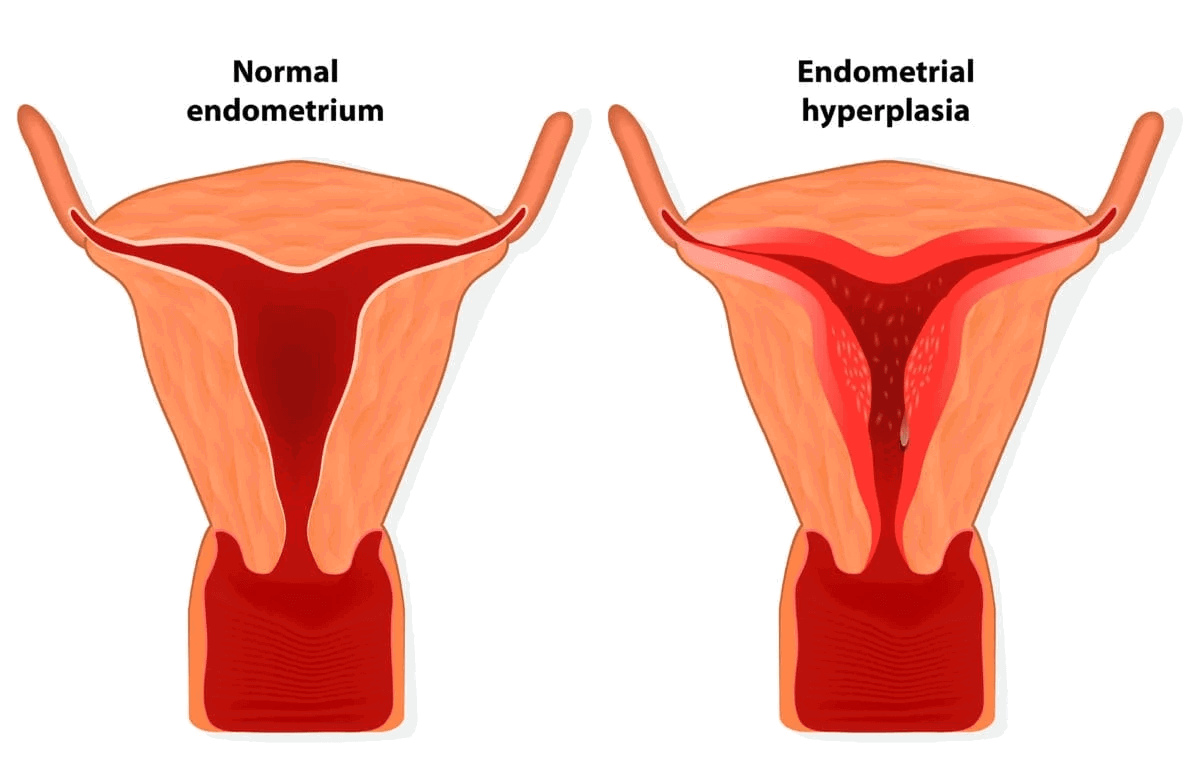Hyperplasia

Overgrowth of the Uterine Lining (Hyperplasia)
Hyperplasia or overgrowth of the uterine lining is an accumulation of uterine lining cells that can occur when periods are infrequent or too light. The condition is also known as endometrial hyperplasia, because the technical word for the lining of the uterus is endometrium.
In the normal female reproductive cycle, the lining of the uterus is shed monthly during menstruation in response to signals the brain receives from hormones in the bloodstream. At the beginning of the cycle, the ovaries produce estrogen. Estrogen encourages the lining of the uterus to grow in preparation to receive a fertilized egg. After ovulation, the ovary begins to release the hormone progesterone, which signals the lining cells to secrete nutrients. If the egg is not fertilized, the ovary stops producing both hormones after about two weeks. Without these hormones, the uterine lining cells die and are shed during menstruation, and then the cycle begins again.
Many factors can cause hormonal imbalances that interfere with this cycle temporarily. Lack of ovulation due to stress, rapid weight loss, excessive exercise or ovarian cysts may interrupt the cycle, because without ovulation, progesterone is not produced and bleeding will not occur. If this goes on for many months, overgrowth of the uterine lining cells may result.
Too much estrogen in the bloodstream can stimulate overgrowth of uterine lining cells. This can happen in women who are overweight, because fat cells produce estrogen. A high level of estrogen (not counterbalanced by progesterone) tells the body not to shed the uterine lining. If this is perpetual, eventually there will be an overgrowth of uterine lining cells.
Hyperplasia in itself is not a serious condition and can be corrected with hormone therapy. Atypical hyperplasia, however, is an overgrowth of cells that may turn into cancer, and this condition involves different treatment.
References
- American College of Obstetricians and Gynecologists. Gynecological Problems: Endometrial Hyperplasia. 2001. www.acog.org/publications/patient_education.pdf/bp147.cfm
- Parker WH. A Gynecologist’s Second Opinion. ©2003; A Plume Book; Published by the Penguin Group, New York, NY.